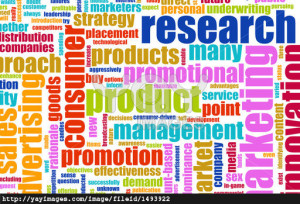As we build (software) products, the competition is something that we need to stay ahead of, but how?
Especially building products for different markets, you always have others building similar products for probably same or different markets. There are already established products that you have to compete with, there are other products that are getting built as you build your product, there are new technologies that throw up new opportunities or challenges that will help new products to build that could surpass yours.
How it’s different from services ?
In services business, you just have a few competitors that you are competing for “a customer”. You know what this one customer is looking for and its often not very difficult to create a competitive strategy. But in case of products, it’s a huge challenge to identify first of all who could be your competitor and if you are lucky to identify all of them, how your products stand out in the market, not just a customer.
So what you need to know to stay ahead of competition ? I try to share couple of key elements that I have focused on in this area, as part of building software products : Research and Communication
Competitive Research:
As software product leaders or product managers, one of the key activities that we need to be focusing on is Competitive Research. This cannot be optional and has to be mandatory task with clear deliverables. If you are lucky, especially working with larger enterprises, there are focused research colleagues who track and share insights about competition. If not there are external agencies that you can engage who can research a bit and share insights about competition. But personally I feel that as the product owners, its best for product leaders or product managers to be closely doing their own research as the expertise that you carry or the interest to get your products successful lies with you.
Tools, Tips and Techniques for Competitive Research:
- Don’t cross legal boundaries – while researching your competition, one of the most critical and important aspect of what you can find out should be based on publically available information and within the legal boundaries of access. This is super critical, while it’s a no brainer, its best to understand legal guidelines laid out by company and if you are startup, better to get some legal advise or attend a course to understand the Dos and Don’t
- Competitors website – Thanks to internet, there is already enormous information available about the competition, especially if you are looking at existing established products. Checking the websites of the competition helps a bit, taking at their value proposition and what customers are talking about the products are very important.
- Social media – This is an interesting channel in last few years where we get lot of information about the competition. From youtube, linkedin, twitter, we can follow and understand what the competitors are doing, what leadership in the competition are doing as well as some of the key stakeholders involved with the competition are saying. From whom they are hiring, which location they are talking from and tit bits are very valueable information you can know about the product
- Community and Blogs – Another great channel to understand competitors is through communities and blogs written by users, partners and employees about the competitive products. There are forums where products are discussed and there are blogs that are written that helps get an informal view of the products
- Analyst – IT industry analyst are a great source of information to understand competitors and their strengths and weakness. Its always better to understand different perspectives of the industry analyst. Your product may still not be in the overall review in the space, but you may want to analyze the market potential through whats being said about the analyst reports.
- Partners website – partners or implementors of software website is key source of information for research. This helps us to understand products better as partners are typically very close to the products and often share some details. Typically a demo of the product posted by partner is often more detailed and really very helpful
- Knowing and following competitor key people – one of the opportunity we have with internet is to know the people better. From a competitive research perspective, one of the important aspect would be to know and follow the key people who are involved in the competition. It could be the CEO of that company, few of the key technology folks there who are involved in the solution area. This gives a great perspective on what they are trying to do and help understand whats in store
- Involving in sales cycles – One of the best way, especially if your product is already out, is to involve in sales cycles. Talking to sales /presales as well as customers. You definitely get insights on how your competitor products is addressing the problems. This can also be done by listening to sales calls as well as just being part of some of the meetings or conference calls. Sometimes customers give you direct feedback on how your products fare and at other times you may get indirect inferences. Participating and contributing in some of the win loss analysis can help take back some of this information.
Having done the research, what do we do with this information to use this effectively as you build your products. While you can have a structure way to incorporate this information into your knowledge base, the important aspect of sharing and communicating this information. Often I have noticed that we share one set of information for different stakeholders, which may be not a good approach.
Prepare and Share
1. Sharing with Sales and Field : Sales organization in your company would like to know exactly how your products are better from your competitors products. What is the key value propositions and some differentiations. This could be addressed at different levels, at the overall product strategy level, on product feature /functionality and the fit with respect to solving key business problem in a better way, and based on customer usage. How competitive fud can be resolved with a capability that exists or likely to addressed in the road map.
The communication here needs to be very broad based, especially if you are selling to different markets or user base. Some information of the regional competitors may also be very useful
2. Sharing with Development : Product Development including product managers are very emotional and close to their products and its often difficult for them to digest to hear that the competitive products are better than your products. But here the communication and comparisons should focus on where the products are weaker then competition, don’t have to be highlighting the strengths but focus on where differentiations can be fulfilled, or how products can catch up with competition. Even an equally good product could be very successful due to other considerations such as price, market and geography focus, as well as mere ability of sales people. So its important to compare and highlight lagging product areas, and get to focus on competitive catch ups or differentiations. Some of the information collected from Analyst could be very useful as it could lead to good insights of competitive products. All of this information also helps in prioritizing backlogs.
3. Sharing with Top Management: Assuming you are not the founder, its important that competitive insights are regularly shared with top management in order for them to get a feel of specifics that competitors are doing in this area. This will help getting the attention for investment into those areas, potential acquisitions as well as help them engage better in their customer/investor interactions.
Competitive Research and Sharing is a key activity that needs good time investment to stay ahead in the race as make Software Products.
Share your thoughts on other













